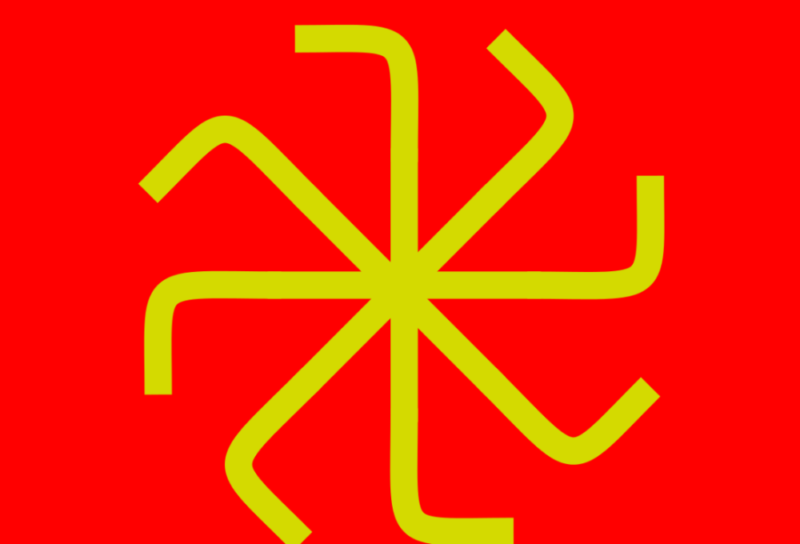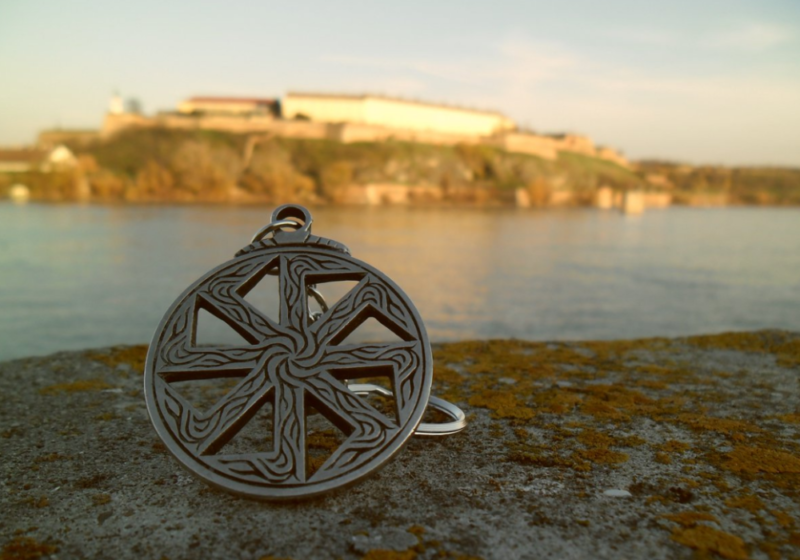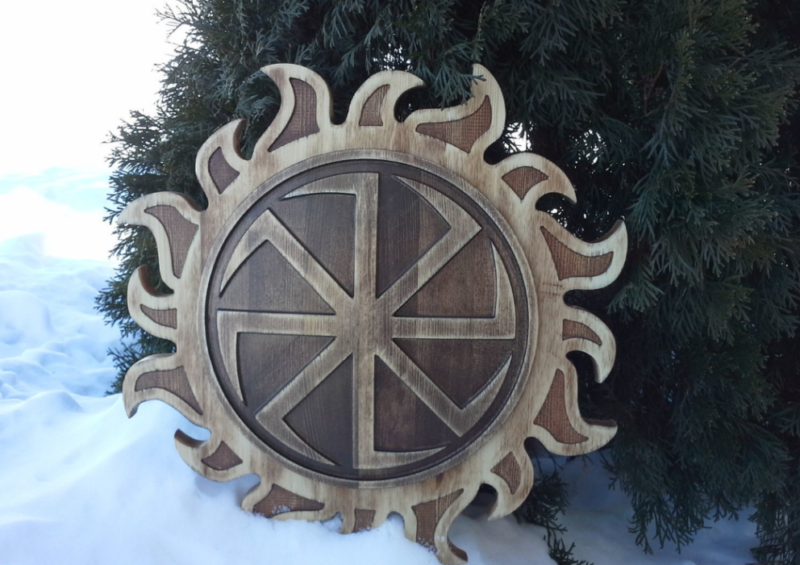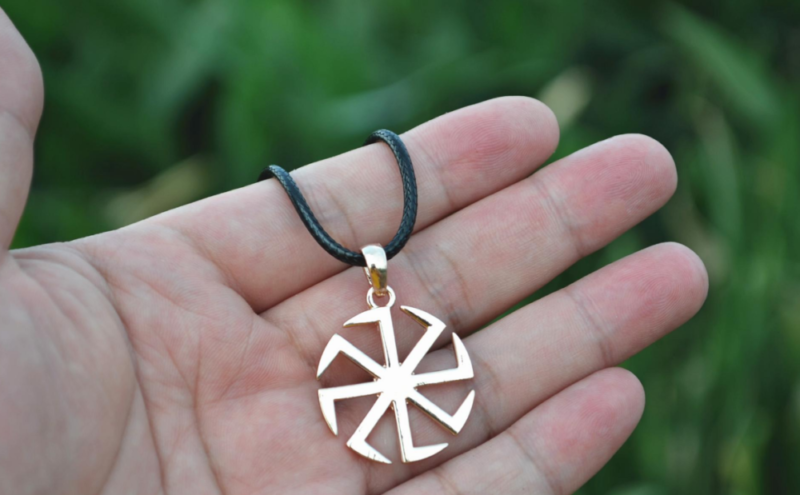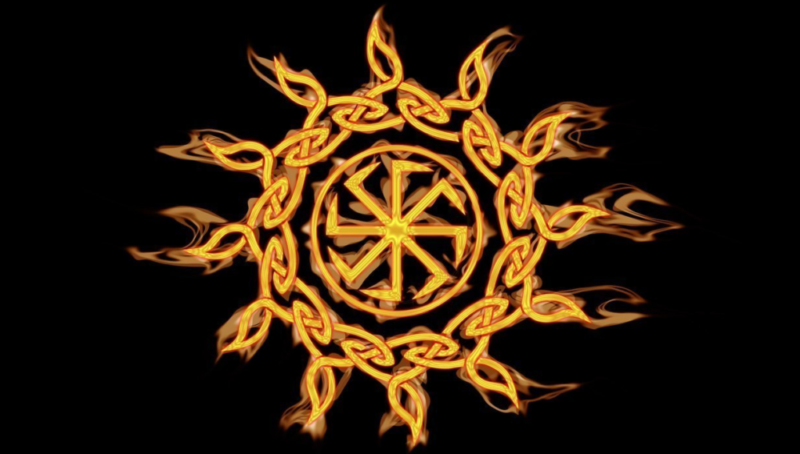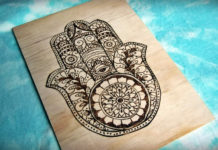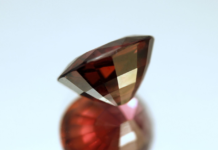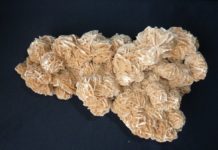In the modern sense, the Kolovrat symbol is associated with the revival of ancient traditions. Its name and meaning has become the subject of controversy and speculation. What did the symbol mean among the Slavs and other peoples, let's try to figure it out together.
Material Content:
Symbol origin story
You can prove the antiquity of a symbol only by meeting on material media that captured its presence in the culture of ancient peoples. It is also important to correctly correlate symbolism with a particular tradition. Kolovrat is now common in the Slavic Rodnoverie. He became the graphic part and the personification of modern Slavs.
The image of the Kolovrat resembles a cross with curved ends directed in a certain direction.
Such symbols are commonly called swastikas, but this is not true. Each symbolic image has its own name, amulet power and meaning. In Russia, the swastika symbols had more than 140 names, which, according to the Rodnovers, emphasizes their Slavic roots.
Ancient Slavic roots of a talisman
In the ancient Slavic culture, a symbol that clearly corresponds to the modern graphic image of the Kolovrat was not found during archaeological excavations. However, there are similar ones related to the X – XII centuries. They have mainly 7 rays. In the Lipetsk region, a pendant was found, which archaeologists attribute to the 1st millennium AD with the image of the Kolovrat symbol with 7 rays.
According to the modern legend of the Rodnovers, the meaning of the symbol of Kolovrat is associated with the ancient gods of the Slavs. In ancient times, the amulet was used for magical purposes. He endowed the possessors with divine power, healed from diseases, helped to accept help from dead ancestors.Amulets were made in the form of a swastika symbol, its image was applied to clothes, household items, used to decorate housing.
"Kolovrat" as a symbol of the sun among the Gentiles
The oldest symbol image is found on the ancient Greek bell dolls of the VIII century BC. e. But some scholars suggest that these symbols are much older. Pagans used swastika signs to convey important concepts in a figurative form, endowing images with magical power. In other words, the swastika for the ancients was a kind of idol worshiped, asking for help and protection.
In India, Nepal, China and other Asian countries, the four-ray solar sign is a symbol of the Sun, generosity, prosperity, prosperity. The Indians associated him with the cult of the fire god Agni. The swastika image adorned the walls and floors of temples and architectural monuments. Now the symbol is used during wedding rituals. The swastika, as a sign of the divine Sun, is found not only among Asian peoples. Archaeologists have found it during excavations in Africa (Republic of Ghana), North and South America.
What does Kolovrat mean?
An exact copy of the modern solar symbol can be seen in the picture of the Polish artist Stanislav Yakubovsky, which dates from 1923. It depicts the Slavic symbol Kolovrat, used in our time by most Rodnovers.
Today, this solar symbol has become so firmly entrenched in modern Rodnoverian life that it can be considered the Slavic sign of our time.
Kolovrat, like any other solarium, symbolizes solar power.
The word "Kolovrat" in the Old Slavic language does not occur. In the terminology of builders there is a Kolovrat, meaning a shaft for lifting weights. Evpatiy Kolovrat is a Russian hero who defended Ryazan from Batu. But in the meaning that is proposed by the Rodnovers, this word has never been used: "colo" is the sun, "gate" is a turn, movement.
Types of Symbols
The swastika is a very ancient sign, many Asian countries still use it. The meaning of the swastika is interpreted differently. Some researchers say that this is a symbol of the sun moving forever in the sky, while others see it as our Galaxy with four “sleeves” resembling rays.
This sign does not have to have 4 rays, there are different options. Swastikas are schematic images of the movement of energy in a certain direction, the direction can be counterclockwise or clockwise. When two symbols with four beams are superimposed on each other, a new eight-ray swastika is obtained, which also means the movement of energy and its direction in a certain direction.
The direction in which the rays are bent determines the meaning of the symbol:
- from right to left (clockwise movement) - male amulet "Kolyadnik", a symbol of the god Kolyada;
- from left to right (counterclockwise movement) - the female amulet “Ladanitsa”, the cross of the goddess Lada.
A four-beam swastika with smoothly curved rays is a sign of the genus, a schematic representation of our universe. There are other interpretations of Slavic symbols with different numbers of rays.
Interpretations of the names “salting” and “salting” in relation to the Kolovrat symbol mean the direction of its rays clockwise or against it. So, if the rays are directed from left to right, the amulet has a positive meaning, it symbolizes wealth, good intentions and intentions, divine help and protection from negativity.
In the opposite direction of the rays, the meaning of the symbol changes - it becomes an instrument for the development of magical abilities, the gift of prediction, the connection of the owner with otherworldly forces.
Is Kolovrat Prohibited
Swastika is prohibited in Russia and most countries after the Second World War, during which the Nazis used it. The symbol of the swastika that was present on the flag and stripes of Hitler's army is associated with the ideology of Nazism.
The Nazis used a four-beam swastika.Kolovrat has 8 rays, and is not associated with the symbols of Nazi Germany. Interestingly, the neo-pagan nationalist A. A. Dobrovolsky, who is called the sorcerer Dobroslav, called the four-beam swastika a Kolovrat in the early 90s. The name should emphasize the difference from the symbolism of the Nazis. Later, the four-ray symbol was replaced by an eight-ray one, also calling it a Kolovrat.
It is depicted on the emblem of the MTR (Union of Slavic Communities), and is not prohibited.
A modern talisman fiction
According to the Rodnovers themselves, Kolovrat is a symbol of the eternal rotation of the sun, which among ancient peoples was considered the center of the universe. The image of the Kolovrat on an amulet or clothing gave the owners an inner strength and special magical abilities.
Currently, the talisman is made of silver, gold, wood or bone.
The material used for the amulet affects its effect:
- silver protects the owner from evil forces and gives health;
- gold gives powerful energy and magical abilities;
- the tree is intended for women, gives attractiveness and well-being.
Before putting on an amulet depicting an ancient Slavic sign, it is "cleaned" of extraneous energy using running water, salt or fire. It is believed that only good people with bright thoughts can wear a symbol. In this modern invention, one can see a substitution of concepts. That is, if a person wears a charm in the form of a Kolovrat, then he is kind, and you can trust him. It turns out a mixture of magic, public hypnosis and idolatry.


